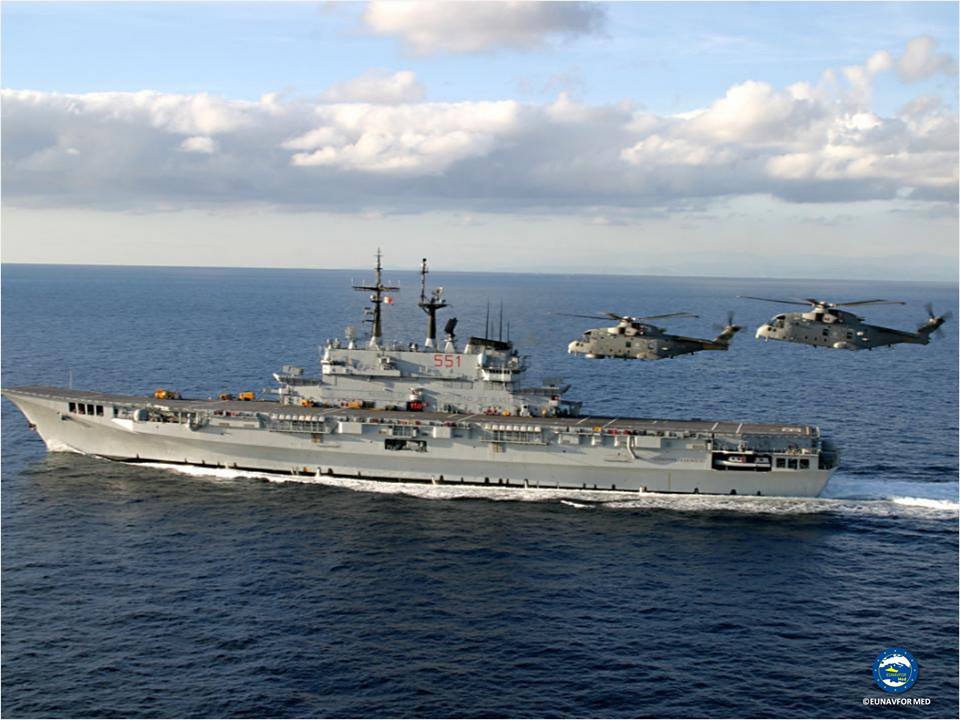New migrants rescued in the Mediterranean. A tilting effect from East to Center?
(B2) The 'Frankfurt am Main', the support vessel of the European military operation in the Mediterranean Sea (EUNAVFOR MED / Sophia) took charge this Tuesday (March 29) of 105 people from an inflatable boat in distress about 50 kilometers north of Tripoli (Libya ), including 51 women and two children. The canoe that contained them was destroyed, considered " as an obstacle to navigation ". The survivors were then transferred to the Italian frigate "Grecale", which is taking part in the Italian operation Safe Sea. Since May 7, 2015, German ships have thus participated in the management of “ of 12.613 people in distress “says the staff of the German navy.
At the same time, other migrants were picked up by the Libyan Coast Guard and the Italian Navy. Since Monday, around 3000 people have been rescued. And on Sunday, 129 migrants were rescued by the British oceanographic vessel Enterprise.
A reopened road
This corresponds, all in all, to what I had observed when I was there aboard the Cavour in mid-March: the Libyan route has reopened, with arrivals of the order of 800-900 people on average per day. To see it as a consequence of the closure of the eastern route (via Turkey and Greece) – as certain observers wedged in their armchair with the ruler and the compass see it – is a hypothesis. But, in fact, it is above all the favorable weather, a calm sea, which allows the Libyan and Egyptian traffickers to resume their "business".
Empty stocks
In a way, they are "draining" the stocks of exile candidates before a new campaign, as any trader would do before a new season. Except that here it is not about goods. But of men, women and children. A way for them to promote their traffic to interested people. A bit like travel agencies, enhance their spring vacation catalog, it is a question of attracting new followers upon arrival in Europe.
Alternate routes within each major route
The idea of switching from one route to another (from the eastern route to the central route) is often mentioned. It has a logic, seen from Europe. But it is not systematic. And those who come into contact with these migratory flows on a daily basis, and whom I have consulted, remain very cautious. There are of course shifting effects between the western route (via Morocco and Spain, a route now closed) and the central route (via Libya and Italy) which both draw their human reservoir from Africa for a good part. There are certainly changeover routes within the eastern route between Turkey and Greece: either via Bulgaria (now closed) or via the Balkans. Instead of the Belgrade Zagreb highway, one can go through Bosnia and Herzegovina, or Albania and then the land route and the Adriatic.
A rocking effect from East to West?
Imagining a switch from the eastern route (via Turkey) to the central route (via Libya) seems a little more complicated today. On the one hand, the networks of traffickers are not systematically the same (even if there may very well be "joint ventures"). On the other hand, to arrive in Libya, coming from the East, except to arrive by sea, in cargo ships or ferries (which is not always easy), it is necessary today to take a land route. Which forces you to go 1) either through Syria (at war), 2) or through Lebanon or Jordan, then Israel, and then to Egypt. However, most of these countries (Jordan and Egypt) have more or less consolidated their borders. Passages, via the sea from Lebanon or from Egypt to Libya, remain more realistic on the other hand.
(Nicolas Gros-Verheyde)

